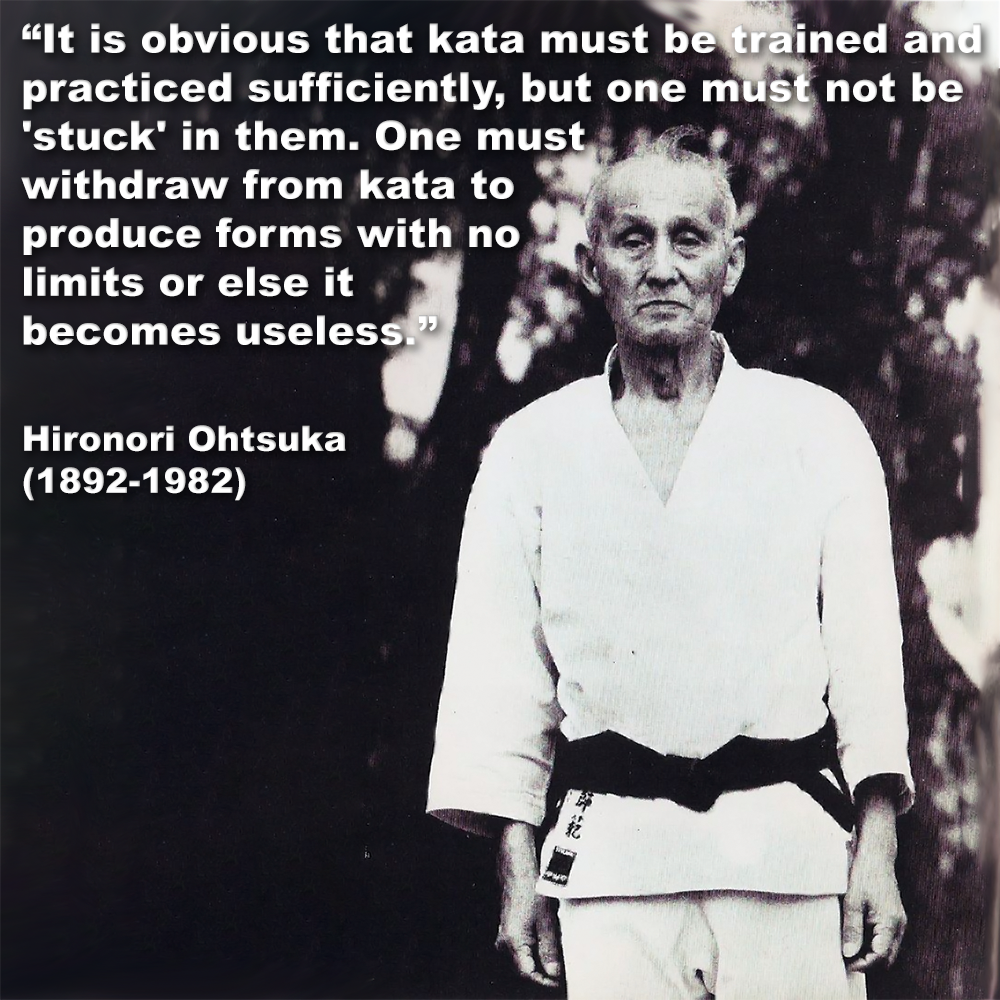
(2 minute 26 second read)
For me if you have a true interest in the martial arts, I believe it is important that practitioners have some understanding of the history of your art.
.
And while studying that history, the claim of practicing an “original” kata, as taught by a specific master, raises a crucial question: what truly constitutes “original” in the context of kata?
.
But what is original?….. The true fact is, we don’t really know what the original kata looked like when it was created. Throughout history, across styles, lineages, and families, variations of the same kata have emerged.
.
Modifications were, and are, more common than openly acknowledged.
.
For some practitioners, adherence to a lineage and the belief in practicing the “original” art hold deep significance, and many of these individuals openly publicize that they practice and teach the unaltered “original”.
.
It’s interesting to see how some people believe traditional kata, are never meant to change. But even those who hold this view often make minor changes to “authentic” kata themselves, even if they don’t consider it a big deal. They might justify these changes for various reasons, which often don’t actually improve the effectiveness of the kata at all.
.
This inconsistency is even more noticeable when you see different groups, or practitioners within the same style or organization, performing the same kata in slightly different ways. This highlights the fact that kata have naturally evolved over time.
.
Were different versions of kata taught to different students? The theory is that by teaching students slightly different concepts, it’s recognized that variations in movements enabled different uses, and there may have been some desire to retain some of these capabilities, thereby preserving the variation.
.
Instead of focusing on finding the “one true” version, it’s more productive to appreciate the different interpretations and see them as part of the rich history and continuous evolution of kata.
.
The reasons for kata variations are multifaceted and can include changes because of aesthetics, changing techniques that might enhance a kata’s visual appeal for competitions.
Of course the excessive emphasis on the “look” of kata can overshadow its deeper meaning.
.
And as karate entered schools and universities, the focus may have shifted, altering the kata’s intended application.
.
As instructors age they may tailor versions of kata to suit themselves because of reduced functionality or disability, or change may occur because some students’ have diverse physical attributes or learning styles.
.
While some masters and teachers have advocated against altering kata, subtle changes inevitably occur over time. Memory lapses, misinterpretations, and even imperfect observation contribute to this evolution and change.
.
The abundance of kata interpretations reflects the richness of the tradition and each variation can carry valuable knowledge offering unique insights into the art’s depth and adaptability.
.
Perhaps then, instead of chasing the unattainable ‘original’, you should focus on the rich diversity of kata interpretations, as understanding these variations can deepen your knowledge and make your practice even more fulfilling.
.
While understanding the historical foundations of a practice gives valuable insights, it’s equally important to recognize that traditions naturally evolve over time. This ongoing change shouldn’t be seen as a threat, but rather as a testament to the adaptability and relevance of tradition. In fact, tradition should inspire innovation, not limit it.
.
“It is obvious that kata must be trained and practiced sufficiently, but one must not be ‘stuck’ in them. One must withdraw from kata to produce forms with no limits or else it becomes useless.” – Hironori Ohtsuka (1892-1982)
.
